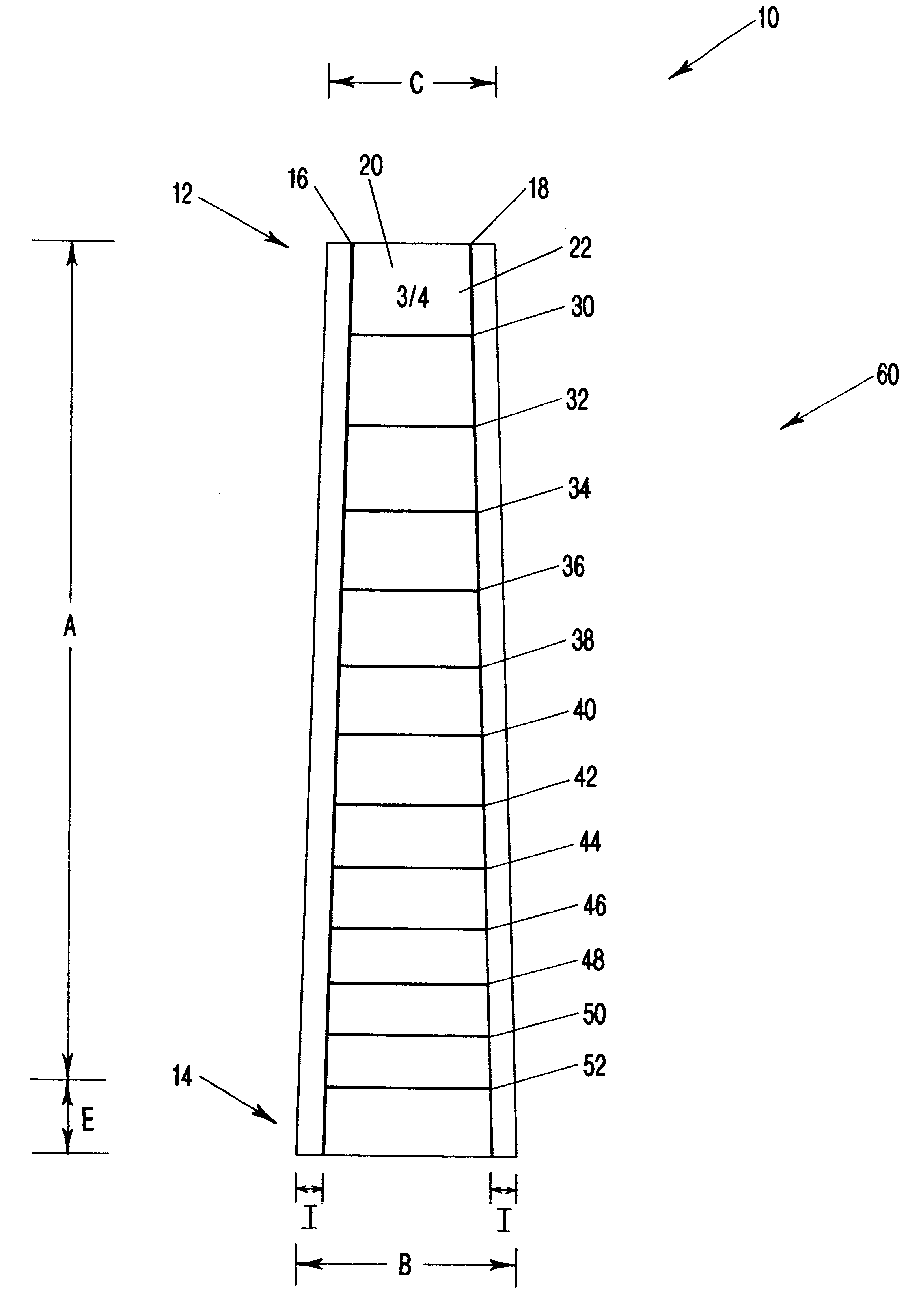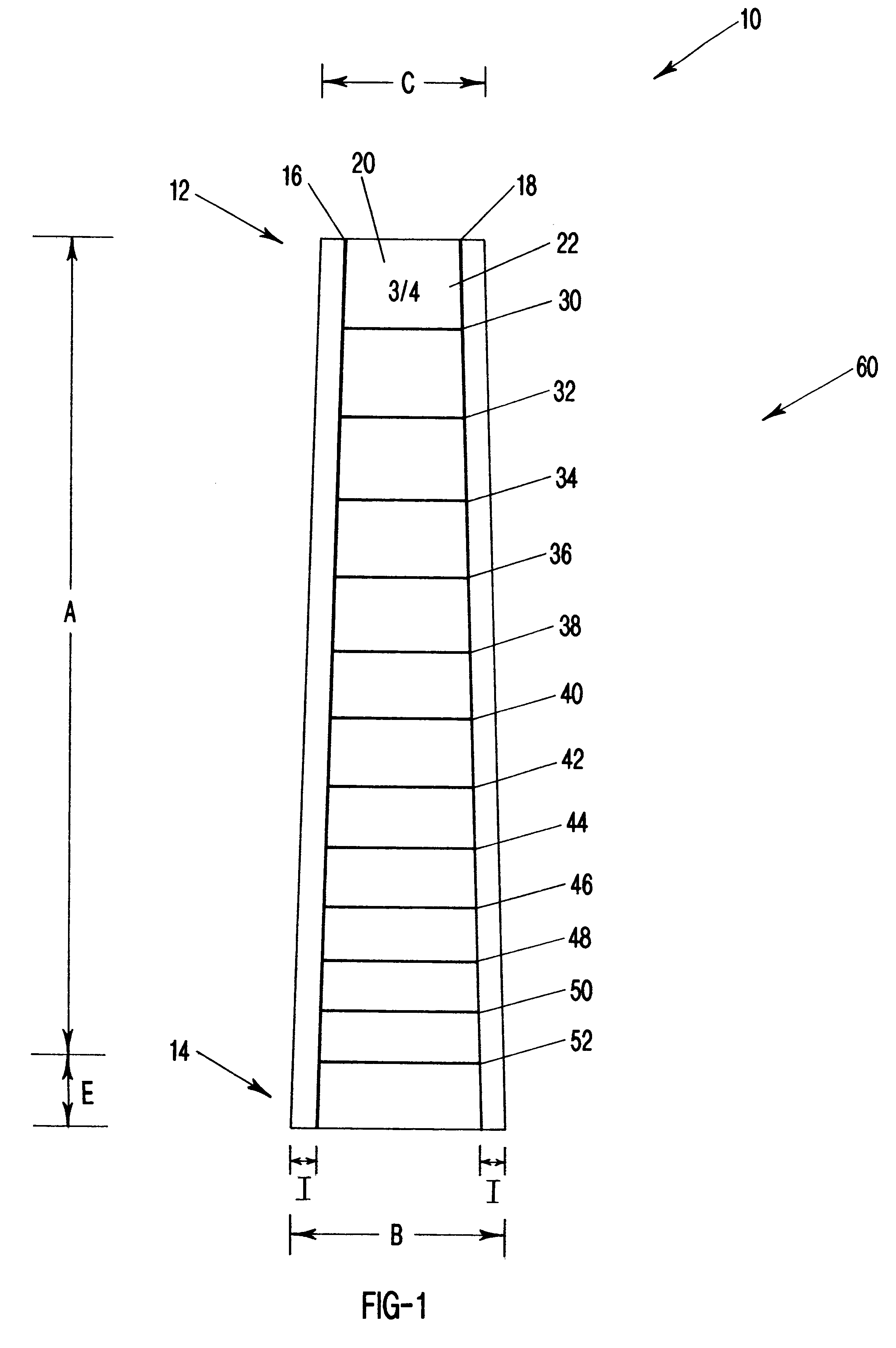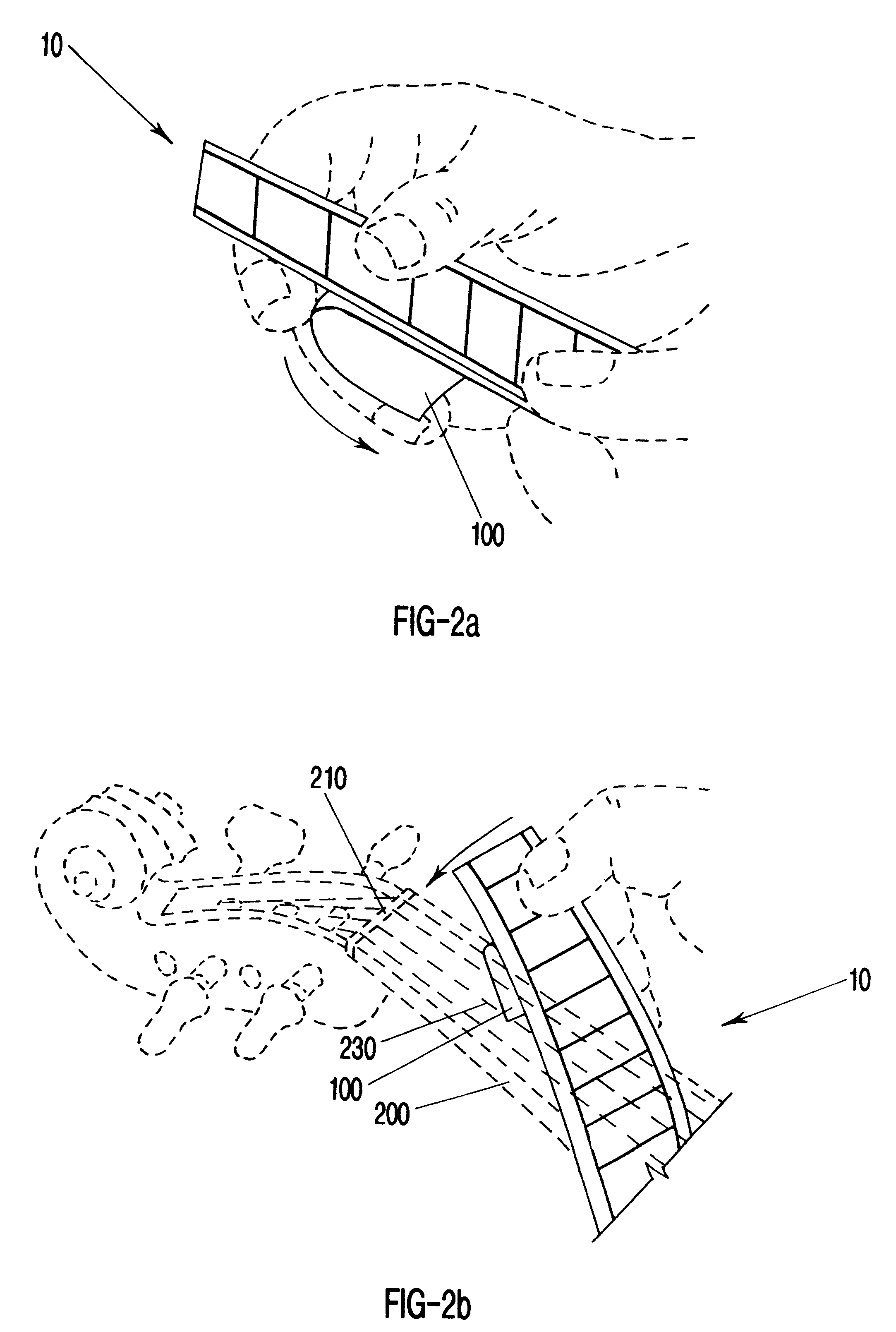Note locator for stringed instruments
- Summary
- Abstract
- Description
- Claims
- Application Information
AI Technical Summary
Problems solved by technology
Method used
Image
Examples
example
In an actual school setting, beginning string students had no idea where to place their fingers so as to achieve the various notes of the violin. After applying note locator 10 to the instruments, the teacher was able to concretely tell the students that on the D-string (the 3rd), placing the index finger at the orange line, the middle finger on the yellow line, the ring finger on the red line and the little finger on the green line produces the notes E, F-sharp, G and A, which together with the D form the first five notes of the D-major scale. Additionally, the teacher, having a concrete element with which to work, was able to correlate the resultant notes with their notation on the musical staff, and also to begin the process of training the student's aural awareness by demonstrating the different sounds which resulted when a finger was placed off of the line ("out of tune"). It was thus found that note locator 10 aided the students in achieving the proper finger placement and app...
PUM
 Login to View More
Login to View More Abstract
Description
Claims
Application Information
 Login to View More
Login to View More - R&D
- Intellectual Property
- Life Sciences
- Materials
- Tech Scout
- Unparalleled Data Quality
- Higher Quality Content
- 60% Fewer Hallucinations
Browse by: Latest US Patents, China's latest patents, Technical Efficacy Thesaurus, Application Domain, Technology Topic, Popular Technical Reports.
© 2025 PatSnap. All rights reserved.Legal|Privacy policy|Modern Slavery Act Transparency Statement|Sitemap|About US| Contact US: help@patsnap.com



